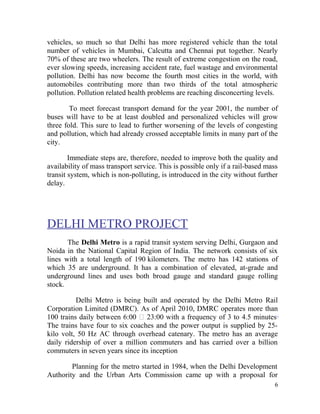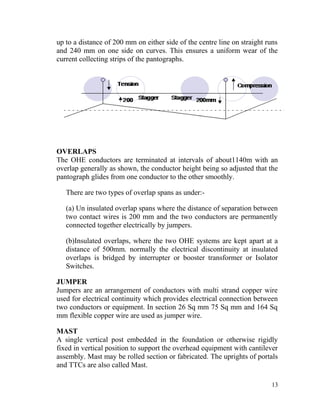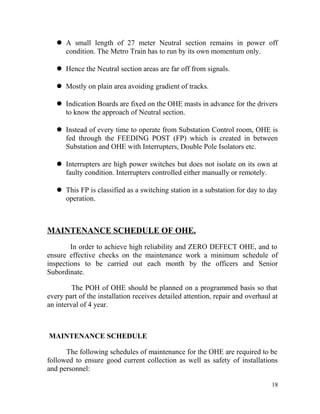This training report provides a summary of Vikanksh Nath's summer training internship at Delhi Metro Rail Corporation from June 6 to July 8, 2016, focusing on the traction system. It includes a certificate of completion signed by his mentor, Mr. Lokenendra Singh. The report then discusses the organizational structure of DMRC's power distribution system, including how it receives high voltage power and distributes it for traction and auxiliary uses. It provides an overview of the key components of DMRC's electric traction system, including the overhead equipment, power supply installations, and supervisory control and data acquisition systems.



































